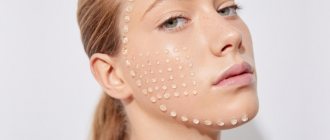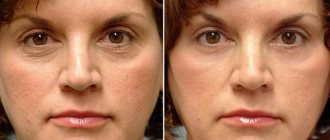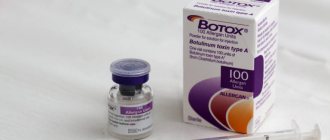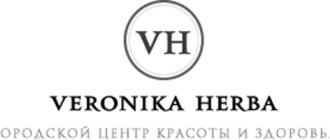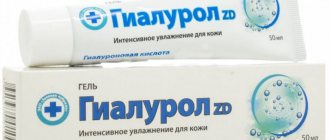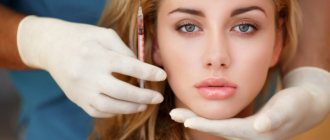Sign up for a free consultation
If you ask a search engine a classic question about the differences between biorevitalization and mesotherapy, you will get a lot of links, but, unfortunately, many of them contain obvious errors and even complete inconsistency of adjacent paragraphs. We asked our specialists to answer frequently asked questions from our patients about biorevitalization and mesotherapy, which our patients often ask, and compiled their answers into a separate material.
What is the difference between biorevitalization and mesotherapy? Or is this the same procedure?
No, not exactly the same. Let's start with the fact that biorevitalization appeared after mesotherapy, and much later. Initially, the method of mesotherapy - the introduction of microdoses of the drug directly into the problem area - was used in the treatment of pain of various origins and inflammation.
The idea of mesotherapy is injections of “cocktails” containing biologically active substances, vitamins and microelements, specially selected for your skin. After the spread of mesotherapy, its variety appeared - biorevitalization, which is also an injection technique, but uses hyaluronic acid preparations, universal for all patients.
Where to start maintenance therapy, with biorevitalization or mesotherapy?
It all depends on the condition of the patient’s skin. Biorevitalization with hyaluronic acid is recommended for moisturizing the skin, while mesotherapy solves a wider range of problems. However, we continue to insist that each patient is individual, so the final choice of procedure must be decided in a personal consultation with a specialist.
In what order is it better to combine procedures – to perform biorevitalization after mesotherapy or vice versa? Or maybe even alternate them?
We recommend not to forget the basic principle of mesotherapy: “Rarely, little and in the right place.” Patients sometimes forget about the first two components in the pursuit of youth. Fortunately, this is why professional cosmetologists exist, reminding: “a lot” does not always mean “good”.
There are no fundamental contraindications to the interchangeability of these two procedures, but the general one-time course will still remain the same in terms of the number of your visits to the cosmetologist. You will discuss which particular technique or combination of techniques is best for you during an individual consultation with a specialist.
How long does it take to recover from injection techniques?
Since hyaluronic acid is perfectly absorbed by the body, after its subcutaneous administration it only takes time for the papules to resolve and the marks from injections to disappear. Thus, in general, we are talking about 1-2 days of the recovery period after the biorevitalization procedure. After mesotherapy procedures, recovery takes the same period of time, a little longer - up to 4-5 days - due to the high activity of the substances included in the “cocktail”.
What procedures are not recommended after biorevitalization or mesotherapy?
The first thing we warn our patients about is that for several days after the procedure you will have to exclude facial massage and visiting the bathhouse or sauna.
It makes sense for you to consult with the cosmetologist who will perform the procedure on whether it is acceptable to use decorative cosmetics after biorevitalization or mesotherapy. The specialist will learn about your skin’s reaction and will be able to recommend the most careful and competent facial care.
In conclusion, I would like to remind you that we perfectly understand how you want to quickly return to your normal lifestyle after any rejuvenating procedure. The modern rhythm of life, especially in a metropolis, dictates its own rules and deadlines, making adjustments to the outdated measured schedule. We, doctors, also live in an intense rhythm, we understand the desire of our patients to do as much as possible, but the commandment “Do no harm!” is the basis of the work of every doctor. Therefore, if we recommend abstaining from certain foods, cosmetics or visiting certain places, you can be sure that we have indicated the shortest possible period for these restrictions. Be patient - and you will see that the result is worth it!
What are fillers and when is their use appropriate?
Fillers (from the English “fill” - “fill”) are used in contour plastic surgery and are gel-like preparations that are intended for:
- filling wrinkles and deep skin folds;
- shaping (sculpting) the oval of the face, chin, etc.;
- adding volume in the necessary places - lip augmentation, etc.;
- skin tightening;
- eliminating asymmetry.
The effect of fillers lasts from several months to several years.
Attention! This is an ideal option for loose, sagging skin with obvious signs of aging, as well as for asymmetrical facial contours.
FACIAL TREATMENT
The face and neck were treated using the “papules” and “tubercles” techniques. The “papule” technique is used inside the bony rim of the orbit and in the neck area; on the cheeks and on the wings of the nose - the “tubercles” technique (locations of rosacea, enlarged pores).
To perform “papules,” a needle is inserted into the dermis with the cut up, almost parallel to the surface of the skin, only to the depth of the cut, and the drug is applied. The dose of the administered substance is controlled visually. The size of the resulting “papule” should not exceed 1 – 2 mm (Fig. 5)
, the distance between the “papules” is 1 – 1.5 cm.
The use of the “papules” technique is due to the insignificant expression of subcutaneous fatty tissue and the location of the muscles close to the skin in the periorbital zone and on the neck. Thus, both drugs simultaneously exert their dermal effects and weaken the contractile activity of terminal muscle fibers.
Inflammatory elements and areas of hyperpigmentation are treated using the “tubercle” technique (Fig. 6)
, which allows you to create a maximum depot of the drug in the area where the problem is forming. To create a “bump,” the needle is inserted into the dermis to its full depth at an angle of 45°, with its bevel turned downward. This placement of the needle facilitates the introduction of the drug into the middle and deep layers of the dermis. The distance between injections is 1 – 1.5 cm.
When to do biorevitalization
Cosmetologists recommend biorevitalization when necessary:
- smooth out the first wrinkles;
- moisturize excessively dry skin;
- tone the dermis and improve its overall health;
- restore the dermal layer after aggressive cosmetic procedures;
- prevent aging.
During the procedure, special preparations based on hyaluronic acid, which is a natural component of the human epidermis, are injected under the skin. How does hyaluronic acid work:
- attracts moisture, protecting the dermis from dryness for a long time;
- helps to activate the production of collagen and elastin, the lack of which leads to aging of the skin layers.
What is the difference
How to understand which procedure is which, and how fillers differ from biorevitalization:
- Biorevitalization is carried out using injections based on hyaluronic acid; fillers can be based on other components - calcium hydroxyapatite, silicone, the patient’s adipose tissue.
- Preparations for biorevitalization are always soft, with a loose consistency, while fillers can be plastic, dense, light and medium density.
- Biorevitalization is designed to improve the health of the skin and tone it. It will not be able to smooth out deep folds or significantly correct the shape of the face - this is the task of contour plastic surgery.
- During biorevitalization, the drug can be administered either by injection or using a laser. Fillers are injected with a syringe or cannula. Moreover, in the first case, a large area needs to be treated and pain relief is inevitable. In contour plastic surgery there may be only a few injections, and anesthesia is not always necessary.
- To achieve the desired effect, biorevitalization must be completed over a course; contour plastic surgery can work the first time.
Facial mesotherapy prices
| Service code | Area of influence / List of procedures / Drug | Price |
| A11.01.013 | WHEN PAYING FOR A COURSE OF 9 PROCEDURES, THE 10TH PROCEDURE IS FREE | 0 |
| A11.01.013 | FACE | 3900 |
| A11.01.013 | HAIR | 3900 |
| A11.01.013 | HANDS | 3900 |
| A11.01.013 | NECK | 3900 |
| A11.01.013 | BODY | 3900 |
*
— the price is indicated in rubles
Go to the BIOREVITALIZATION
Go to MESOTHERAPY section
Similar:
- Laser biorevitalization
In press:
- Basic procedure to maintain youthful skin
News:
- A new method of hardware cosmetology – a procedure for laser biorevitalization of the skin
Common features
Both procedures are designed to improve skin condition. Common features:
- preparations for biorevitalization and contouring are presented in the form of gels;
- gels are also called “fillers” and “fillers” in both cases;
- most gels for contouring are made on the basis of hyaluronic acid, like preparations for biorevitalization, and therefore help moisturize and rejuvenate the skin;
- modern fillers are biodegradable, that is, they are completely eliminated from the body over a certain period of time.
What's better
Each procedure has its own characteristics, so what is better - fillers or biorevitalization - is decided by the cosmetologist depending on the condition of the patient’s skin.
Is it possible to combine both methods - in some situations this is possible. When it is necessary to carry out biorevitalization after fillers or vice versa, the cosmetologist finds out in each individual case. As a rule, the doctor maintains the following sequence of work:
- Improves skin condition using biorevitalizing procedures. After all, if the skin is deficient in collagen and elastin, the filler may be poorly distributed in the dermal layers. Therefore, first, healing and stimulation of cell renewal are carried out, then contour plastic surgery.
- Injects fillers 2–4 weeks after biorevitalization.
Is it possible to use both methods on the same day? Theoretically, yes. There will be no harm from such manipulations, but there is a risk of reducing the life of the filler. After all, the biorevitalizer provokes a desire for the active “antidote” hyaluronidase introduced during contouring. This enzyme breaks down hyaluronic acid molecules and quickly removes them from the body. Therefore, combination can reduce the entire result of contouring to zero.
Differences between bioreparation and biorevitalization
Despite the fact that biorevitalization is a method similar in principle of action, its key difference is the drugs used. The injections used for biorevitalization include hyaluronic acid; moreover, it is the central active ingredient. Despite the high efficiency of hyaluronic acid injections and the rapid achievement of visible results, they last less time. In addition, hyaluronic acid can cause severe allergic reactions, so a diagnostic examination should be performed before using it. However, the strengths of biorevitalization are the active moisturizing effect, which appears instantly, stimulation of collagen production, as well as restoration of healthy skin color, elimination of pigmentation and normalization of sweating. Treatment consists of several sessions; the quantity is determined by the degree of complexity of the identified problem. At a young age, the course of treatment can be completed in two sessions; in more mature ones, it is appropriate to carry out 5-6 injections with an equal time interval between them.
During bioreparation, the drugs used for injection together constitute an active nutritional complex in which the components interact with each other, complementing the effect, stimulating metabolic processes and creating an additional protective barrier. As in the case of biorevitalization, there are a number of restrictions and contraindications for use: weakened immunity, inflammatory processes, cancer and exacerbation of chronic diseases, pregnancy and breastfeeding.
A plastic surgery specialist will be able to help you make a final decision regarding the appropriate treatment method, select medications and professionally identify individual intolerance to certain components during the initial appointment and conduct the necessary laboratory tests.
| Author of the article: | Vasilyeva Natalya Viktorovna |
| Speciality: | Dermatovenerologist, cosmetologist |
| Experience: | 23 years old |
Make an appointment
Opinion of cosmetologists
The cosmetologist talks about the need to complete a full course during biorevitalization in this review. He notes that only in this case should one expect a good effect.
A dermatocosmetologist talks about the fact that you shouldn’t inject fillers and biorevitalizers on the same day in this review. He says that it is better to take a break between procedures of up to 4 weeks. Otherwise, there is a risk of distorting the final result and reducing the duration of the filler due to the activation of hyaluronidase.
The next cosmetologist also says that it is possible to combine fillers and biorevitalization. Notes that everything is allowed to be done in one day. But he doesn’t recommend it, since it will put an additional burden on the body and the biorevitalizer can reduce the duration of the filler.
Fillers and radiofrequency treatments
Radiofrequency exposure is a common technique used to sculpt the face and body. Scientific studies conducted at the Amore Pacific Corporation Research and Development Center, Yongin, Korea and Seoul University have shown that the injection of fillers after exposure to radio waves produces good results. However, in this case, you need to wait for tissue recovery after the procedure.
During radiofrequency treatment, excess fat cells are removed, which causes the effect of liposuction. However, in some areas it is necessary to add the missing volume using fillers, so cosmetologists actively use them.
Skin tightening after radiofrequency treatments has a beneficial effect on the results obtained with fillers, especially those containing hyaluronic acid. Combined rejuvenation prolongs the period of stay of the filler in the tissues and reduces the volume of filler required to obtain the desired result.
Combination of filler and radiofrequency treatments before and after
The use of radio frequencies together with filler helps get rid of deep wrinkles and maintain the results for as long as possible.
Patient reviews
The patient from this review has been doing biorevitalization for many years. She says that at first there was no effect and even wanted to give up injections, but after completing a full course I saw the first results. He believes that it is not in vain that he resorts to this method as a preventive measure against aging.
The following patient considers biorevitalization a powerful skin care procedure. He says that no masks give such a moisturizing and renewal effect as this technique.
As for the use of fillers, in this review the patient tried to get rid of bags under her eyes with their help. He says that the effect was noticeable immediately after the procedure. I'm delighted with the result. Recommends it to everyone.
The patient decided to enlist the support of a cosmetologist in this review. I asked what was the best way to remove nasolabial folds and the doctor advised using fillers to correct the shape of the face. After the cheekbones were raised, the nasolabial lips were smoothed out without additional injections.
The difference between fillers and biorevitalization is noticeable. One procedure is aimed at improving the condition of the skin, the other at creating beautiful facial contours.
But they also have something in common - both methods are designed to improve the condition of the skin and make the owner more beautiful and younger. Therefore, what to choose is decided by the cosmetologist, depending on the wishes of the patient and his condition of the dermis at the time of treatment.
Filler and biorevitalizant: answers to the most popular questions about injections
Injection rejuvenation methods using hyaluronic acid preparations have long been leaders among the variety of cosmetic procedures. Nevertheless, patients at beauty clinics regularly have questions related to injections. We have collected the most popular of them and asked them to relevant specialists.
Lyudmila KAMELINA, dermatologist and cosmetologist at the Danishchuk Clinic, specialist
Firuza ALI-ZADE, dermatologist, cosmetologist, trainer, dermatocosmetologist at the FrauKlinik plastic surgery clinic (Moscow)
According to manufacturers, injectable preparations with hyaluronic acid may differ from each other in their properties, while for ordinary people this is nothing more than a publicity stunt. Where is the truth?
In cosmetology, there are two main areas of injectable use of hyaluronic acid (HA) - to replenish tissue volume and improve the quality of the skin. There are preparations with HA that stay in the skin for a fairly short time and then break down. Their main function is to have a stimulating and moisturizing effect. This class of drugs is called biorevitalizants. The second group of drugs contains slowly breaking down HA; it is used as a filler in those areas where there is a lack of volume (wrinkles, creases, nasolacrimal and nasolabial grooves, cheekbones that have lost their shape). But the differences between the drugs do not end there. Even among themselves, fillers can differ greatly in their characteristics. Thus, softer, lighter and more elastic gels are used for the lip area, and denser and more viscous ones are used to correct the cheekbones. The same applies to biorevitalizants - they can combine various forms of HA or contain some additional substances. Naturally, they will have slightly different properties.
For what purpose do manufacturers combine filler and biorevitalizant in one preparation?
This is a new generation of drugs that solve two problems at once - they compensate for a moderate volume deficit and cause a physiological improvement in the quality of the skin, moisturize and rejuvenate it. Such drugs include biorevolumetric Bio-Expander from the Italian company Regenyal Laboratories. It is produced using a special technology that allows the combination of highly purified stabilized and unstabilized HA. Due to its mesh structure, the drug is well distributed in tissues, intensively moisturizes the skin, stimulates cellular processes, rejuvenates and restructures the dermis, and improves complexion. Due to the slow release of native HA, the gel remains in the skin for a long time and has a gradually developing biostimulating effect. Biorevolumetrics are perfect for filling nasolabial folds, correcting the cheek-zygomatic, temporal and glabellar areas, and for rejuvenating the area around the mouth (purse-string wrinkles). They can also be recommended for smoothing and revitalizing thin skin in the neck, décolleté, and hands. Due to their high elasticity, such preparations provide a natural correction of age-related changes and allow a comprehensive approach to solving aesthetic problems.
What is the difference between stabilized and unstabilized hyaluronic acid?
Stabilized HA contains specially created additional bonds that slow down its breakdown and prolong its presence in tissues. These bonds are created using the chemical agent BDDE (butanediol diglycidyl ether). The more cross-links between HA molecules in a preparation, the longer it will take to break down. Bound hyaluronic acid allows you to maintain the desired volume of tissue, model the oval of the face, fill wrinkles and folds. Unstabilized (free) hyaluronic acid does not contain additional molecular cross-links, so after administration it quickly dissolves, but at the same time provides deep hydration of the skin, improves its texture and quality, and stimulates cellular renewal processes.
If unstabilized HA is immediately absorbed by the body and absorbed, what is the point of introducing it into tissues?
The body has an interesting biological mechanism: during the breakdown of high-molecular substances (in this case, hyaluronic acid), fragments of molecules are formed that contact cell receptors and stimulate the production of themselves. In other words, particles of HA introduced from outside trigger the production of our own, endogenous hyaluronic acid. There are a number of scientific and clinical studies confirming the existence of this mechanism. For example, it has been histologically proven that after just two biorevitalization procedures with Ial-System preparations, skin turgor and elasticity increase, and cellular activity at the dermal level improves.
If your face is prone to swelling, is it worth getting hyaluronic acid injections? After all, it attracts water...
If you are prone to edema, injected HA can actually increase pastosity. Therefore, for such patients, we do not inject drugs all over the face, but correct only certain areas. Even in severe individuals with deformational type of aging and impaired lymph flow, there are areas where dryness, thinning of the dermis and subcutaneous fat are observed, but where excess fluid does not accumulate. For example, nasolabial area, temples, forehead. In addition, we choose products that have less ability to attract water, in particular Ial-System ACP. In structure, it is a HA ester, the units of which contain carboxyl and hydroxyl groups and are connected to each other by additional molecular bonds. Thanks to this, the biorevitalizant does not cause swelling, but works perfectly as a stimulator of cellular regeneration.
Where did the opinion come from that fillers always look unnatural?
When fillers first appeared, cosmetologists did not yet have sufficient knowledge of the technique of introducing them, and the patients themselves sometimes asked for more volume to be injected. As a result, we observed a huge number of “pumped”, puffy faces with hypertrophied lips and cheekbones. Now the approach to contouring has changed. The best work of a doctor is when it is not clear from the outside whether anything has been done to the face, but at the same time the person looks refreshed and rejuvenated. This became possible thanks to the appearance of new drugs on the market and the modernization of the technology for their administration; in addition, the doctor is required to have an excellent knowledge of anatomy, a sense of taste and proportion. Compliance with all of the above factors allows you to delicately correct aesthetic imperfections and rejuvenate your face without turning it into a bloated ball. Nevertheless, there are still patients who themselves insist on excessive administration of drugs. Such people simply do not see signs of hypercorrection and become dependent on beauty procedures, and some doctors, alas, follow their lead.
Many people believe that fillers and biorevitalization should be resorted to only after 30–35 years...
These techniques have different tasks, so the age range for them will not be the same. Biorevitalization involves improving the condition of the skin and preventing aging, and contouring involves replenishing the volume deficit. Injections of biorevitalizants can be indicated up to 30 years of age if the patient loves to sunbathe, but wants to protect her skin from photoaging. For finely wrinkled types of aging, injections of native hyaluronic acid will help avoid the appearance of premature static and expression wrinkles. As for the introduction of fillers, it is worth waiting for the first age-related changes, and then resorting to contouring. For some, this can happen at 28 years old, and for others at 42 - everything is very individual. In addition, there is a separate direction with the use of fillers - beauty. It is carried out not for the purpose of rejuvenation, but for the purpose of correcting defects in appearance and increasing attractiveness. The procedure is carried out at the request of the patient at any age, starting from adulthood. It is often used to make lips plumper and cheekbones more pronounced.

